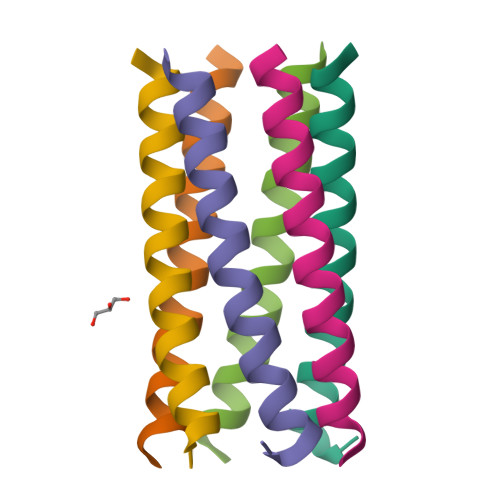A de novo peptide hexamer with a mutable channel.
Zaccai, N.R., Chi, B., Thomson, A.R., Boyle, A.L., Bartlett, G.J., Bruning, M., Linden, N., Sessions, R.B., Booth, P.J., Brady, R.L., Woolfson, D.N.(2011) Nat Chem Biol 7: 935-941
- PubMed: 22037471
- DOI: https://doi.org/10.1038/nchembio.692
- Primary Citation of Related Structures:
3R3K, 3R46, 3R47, 3R48, 3R4A, 3R4H - PubMed Abstract:
The design of new proteins that expand the repertoire of natural protein structures represents a formidable challenge. Success in this area would increase understanding of protein structure and present new scaffolds that could be exploited in biotechnology and synthetic biology. Here we describe the design, characterization and X-ray crystal structure of a new coiled-coil protein. The de novo sequence forms a stand-alone, parallel, six-helix bundle with a channel running through it. Although lined exclusively by hydrophobic leucine and isoleucine side chains, the 6-Å channel is permeable to water. One layer of leucine residues within the channel is mutable, accepting polar aspartic acid and histidine side chains, which leads to subdivision and organization of solvent within the lumen. Moreover, these mutants can be combined to form a stable and unique (Asp-His)(3) heterohexamer. These new structures provide a basis for engineering de novo proteins with new functions.
Organizational Affiliation:
School of Biochemistry, University of Bristol, Bristol, UK.




















